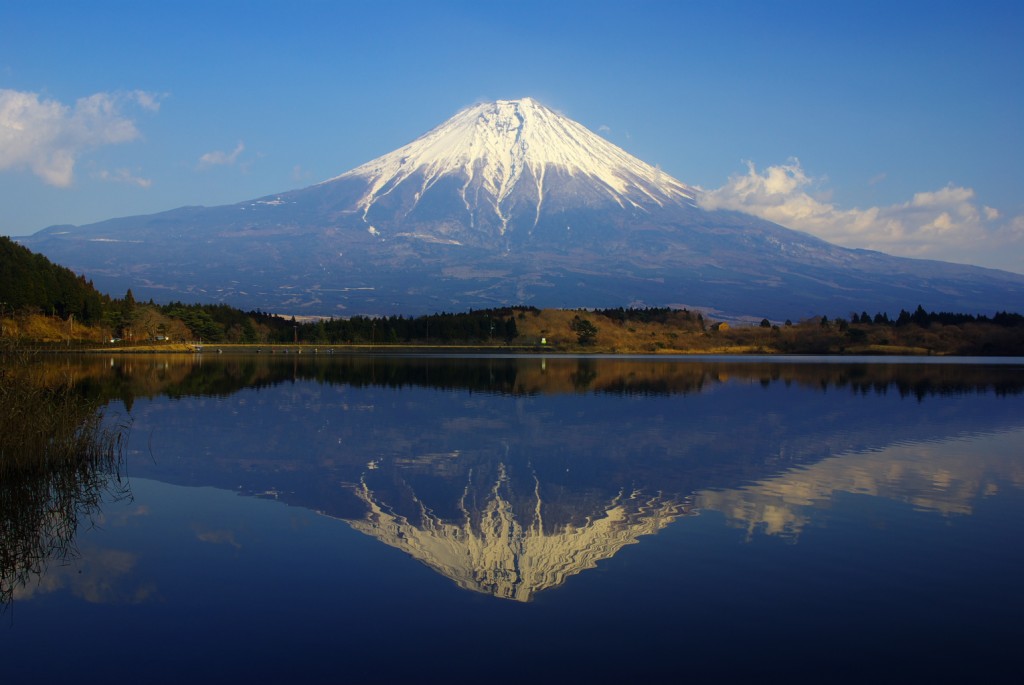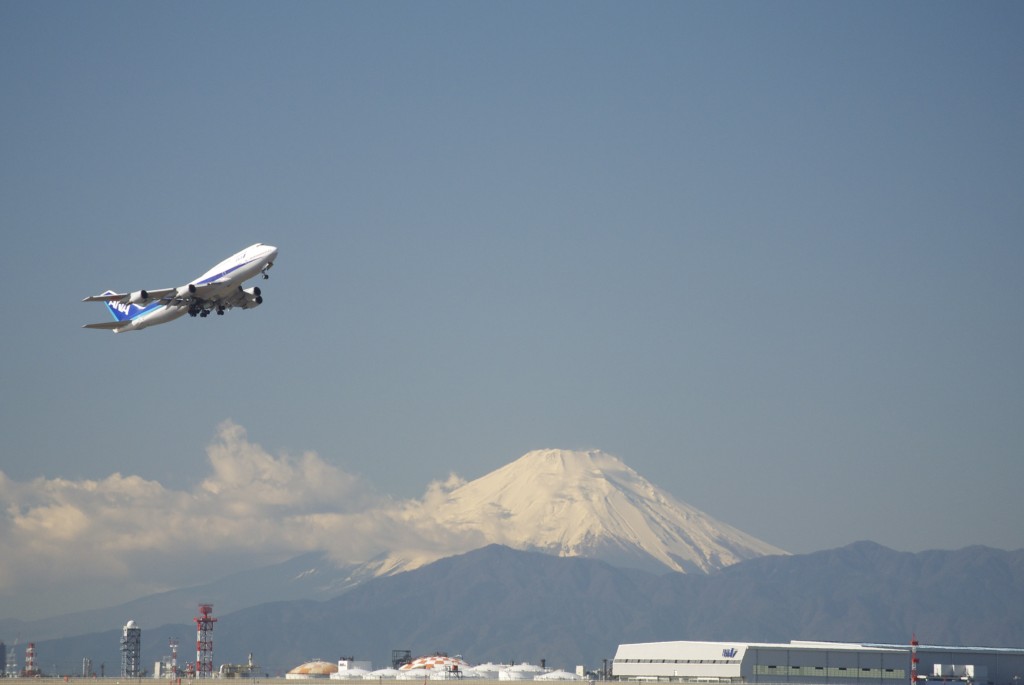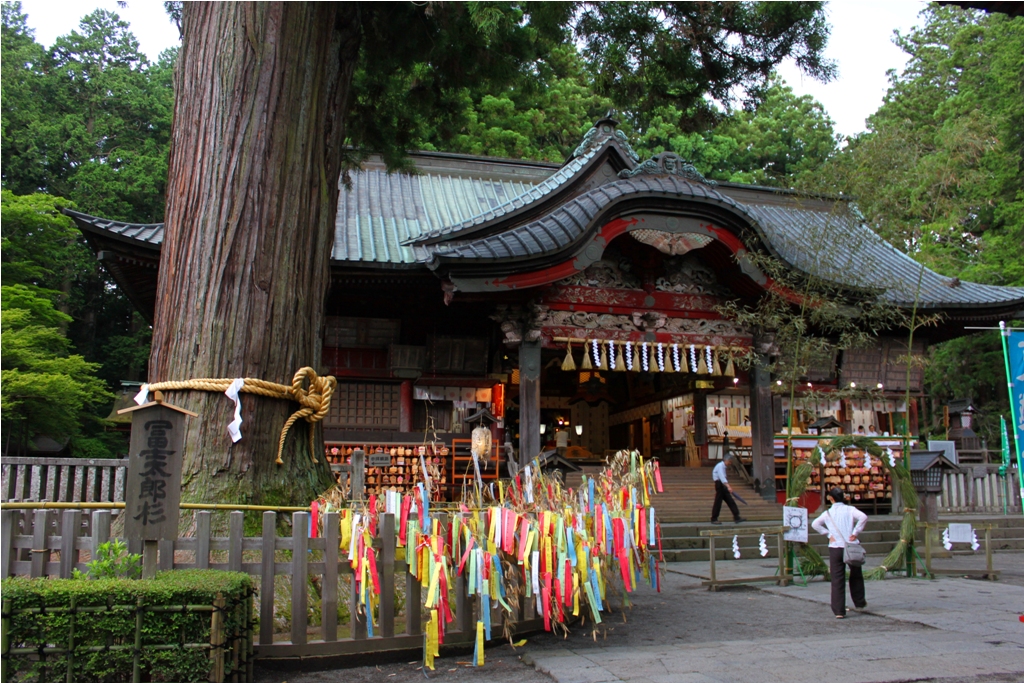
Fuji already prepared for winter, with its characteristic white cap (pic.courtesy of tanuki-fuji)
These are anxious months for Mt Fuji…. While some reports have played up the likelihood of the volcano exploding in the near future, some of the neighbouring settlements and organisations are more concerned about the announcement next June of whether its application for World Heritage status will be confirmed or not.
Fuji is a national symbol of Japan, and its religious significance is thought to extend back to pre-Yamato times when the Ainu lived in the region. It might seem an obvious certainty as a World Heritage Site, to go along with the likes of Stonehenge and Machu Picchu, but a previous application was turned down. One problem as the extract from the Yomiuri article below makes clear is the number of visitors, with cars and waste that has had a negative effect on the environment.
Set against the environmental damage is the cultural significance of the mountain, particularly in its guise as a Shinto kami and source of inspiration for the Fuji-ko sect. In this respect, the shrine mentioned in the article is of particular interest. In the coming months, as the timing of the application draws near, I hope to carry more on the subject.
***************************************
http://www.yomiuri.co.jp/dy/national/T120930002785.htm
Despite their international fame, Mt. Fuji and the ancient samurai capital of Kamakura, Kanagawa Prefecture, may not be added to the World Cultural Heritage list next year.
A decision on Mt. Fuji and Kamakura will be made at a meeting of UNESCO’s World Heritage Committee in June.
According to people concerned, however, listing the two sites may become more difficult because of stricter screening, as there are already 962 World Cultural Heritage sites.

A plane takes off from Haneda airport, with Fuji in the background (photo taken this week from the Ogasawara ship in Tokyo Bay).
Mt. Fuji faces the additional problem of the huge number of climbers who trek up the mountain every year–320,000 have already climbed it this year. In a bid to have it listed, the Shizuoka prefectural government is set to toughen restrictions on the entry of cars on the mountain to curtail this massive assault on the nation’s highest peak.
Kamakura has to contend with the problem that Nara and Kyoto have already been listed. It has to prove to the committee it is somehow unique to these ancient capitals if it wants to join them on the World Cultural Heritage list.
===
UNESCO council’s inspections
In preparation for screening the application for Mt. Fuji’s listing, a Canadian architect from the International Council on Monuments and Sites (ICOMOS), an advisory body to UNESCO, carried out an eight-day inspection in early September at the foot of the mountain.
One site studied by the ICOMOS expert was Kitaguchi Hongu Fuji Sengen Jinja, a major shrine dedicated to the sacred mountain in Fuji-Yoshida, Yamanashi Prefecture.
Yamanashi prefectural government officials said they were keen on convincing the researcher that Japan’s centuries of worship of Mt. Fuji should be recognized as a “cultural heritage.”
For this purpose, the officials permitted the researcher to see such time-honored rites as “otakiage,” in which a group of mountain priests tell good and bad omens based on the falling patterns of ash from a bonfire.
The officials said they hoped this would help the researcher determine the “cultural value” of mountain worship. Japanese traditionally are believed to stand in awe of Mt. Fuji.
In Kamakura where ICOMOS research was conducted from Monday to Thursday, another researcher from the U.N. body, a Chinese architect, was given firsthand experience of “samurai culture being handed down to today” in such forms as sado, the art of tea ceremony, and Zen-related vegetarian cuisine.
Officials of the two candidate sites noted the researchers had difficulty grasping the culture and religious faith peculiar to Japan because they came from different cultural backgrounds.
The officials said they took into account the “lessons drawn from Hiraizumi,” which had to wait three years from the initial application before it joined the cultural heritage list.
The Cultural Affairs Agency promoted Hiraizumi, Iwate Prefecture, for cultural heritage listing in 2008. The effort failed mainly due to a lack of detailed explanations to ICOMOS researchers about the cultural value of the “Pure Land Buddhism” that inspired the creation of Hiraizumi’s legacy.
After that, agency officials excluded some historic sites originally included in the application for the UNESCO registration as they were considered hard to explain to foreigners.
The agency subsequently applied a second time by having the English version of application documents checked by an American researcher of Buddhism. Hiraizumi was added to the World Cultural Heritage list in 2011.

One of the thousand Fuji Sengen shrines, dedicated to Konohanasakuya-hime, goddess of Fuji

Leave a Reply